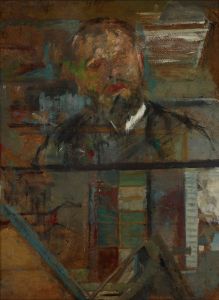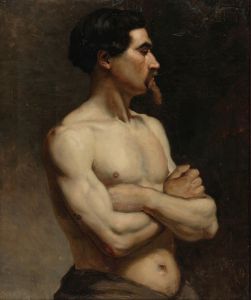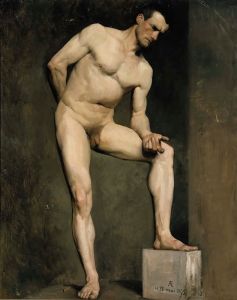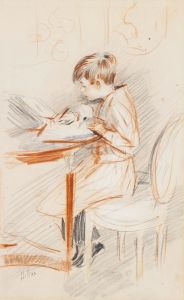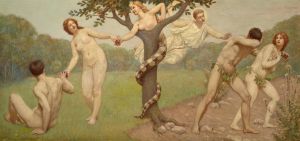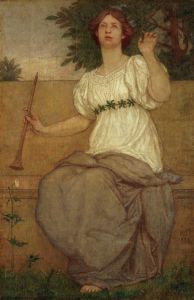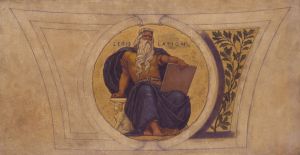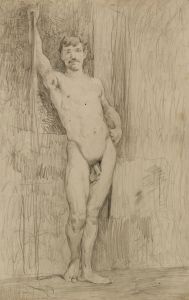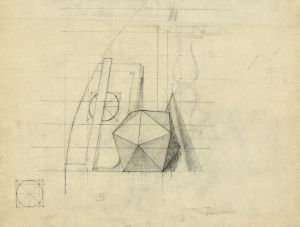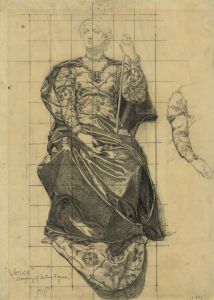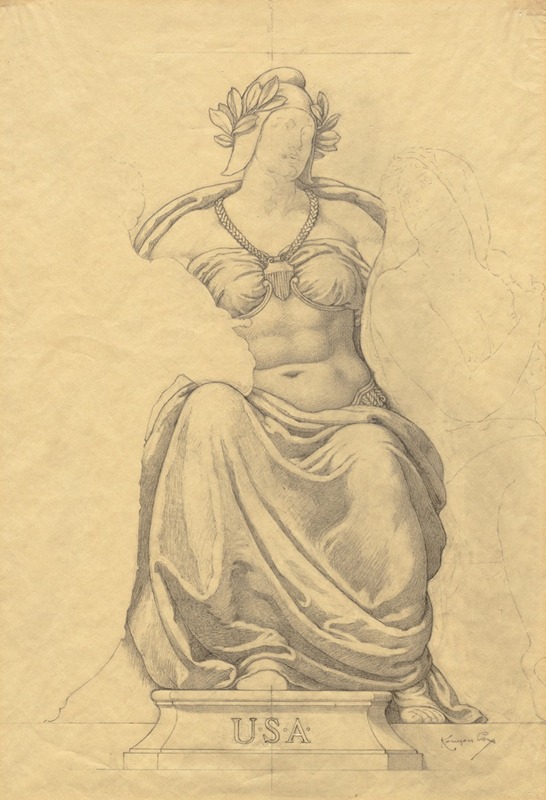
Sketch 3
A hand-painted replica of Kenyon Cox’s masterpiece Sketch 3, meticulously crafted by professional artists to capture the true essence of the original. Each piece is created with museum-quality canvas and rare mineral pigments, carefully painted by experienced artists with delicate brushstrokes and rich, layered colors to perfectly recreate the texture of the original artwork. Unlike machine-printed reproductions, this hand-painted version brings the painting to life, infused with the artist’s emotions and skill in every stroke. Whether for personal collection or home decoration, it instantly elevates the artistic atmosphere of any space.
Kenyon Cox (1856–1919) was an American painter, illustrator, muralist, and writer, known for his academic style and contributions to the American art scene in the late 19th and early 20th centuries. While Cox produced a significant body of work, specific information about a piece titled "Sketch 3" by Kenyon Cox is not readily available in historical records or major art references. Therefore, it is possible that "Sketch 3" may refer to a lesser-known work, a study, or a piece that is not widely documented in public collections or literature.
Kenyon Cox was born in Warren, Ohio, and studied art at the McMicken School of Design in Cincinnati before moving to Paris to further his education at the École des Beaux-Arts. Under the tutelage of renowned artists like Jean-Léon Gérôme and Carolus-Duran, Cox developed a strong foundation in classical art techniques, which heavily influenced his later works. Upon returning to the United States, Cox became an influential figure in the American art community, both as an artist and as a teacher at the Art Students League of New York.
Cox's artistic style was characterized by his commitment to classical ideals and academic principles. He was a proponent of the Beaux-Arts tradition, which emphasized harmony, proportion, and the depiction of the human figure with anatomical accuracy. His works often featured allegorical themes, historical subjects, and mythological narratives, reflecting his belief in art's moral and educational purposes.
In addition to his paintings and murals, Cox was a prolific writer and art critic. He contributed essays and critiques to various publications, advocating for the importance of traditional artistic values in an era that was increasingly embracing modernism. His writings provide valuable insights into the art world of his time and his own artistic philosophy.
Cox's murals can be found in several prominent locations, including the Library of Congress in Washington, D.C., and the Wisconsin State Capitol. These works exemplify his skill in large-scale compositions and his ability to convey complex themes through art.
While specific details about "Sketch 3" are not available, it is important to recognize Kenyon Cox's broader impact on American art. His dedication to classical techniques and his role as an educator helped shape the direction of art education in the United States. Cox's legacy is preserved through his contributions to public art and his influence on a generation of artists who studied under him.
In summary, while there is no specific information available about "Sketch 3" by Kenyon Cox, his overall body of work and influence as an artist and educator remain significant in the history of American art. His commitment to classical ideals and his contributions to public art and art education continue to be recognized and appreciated today.






